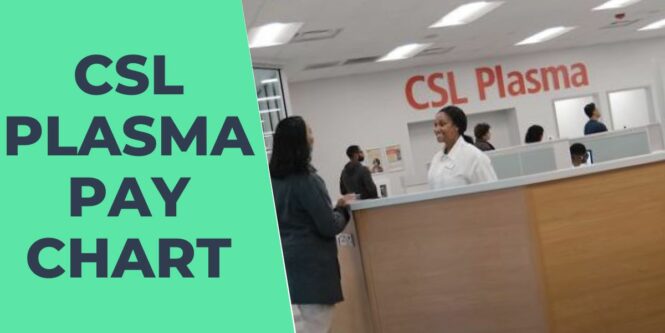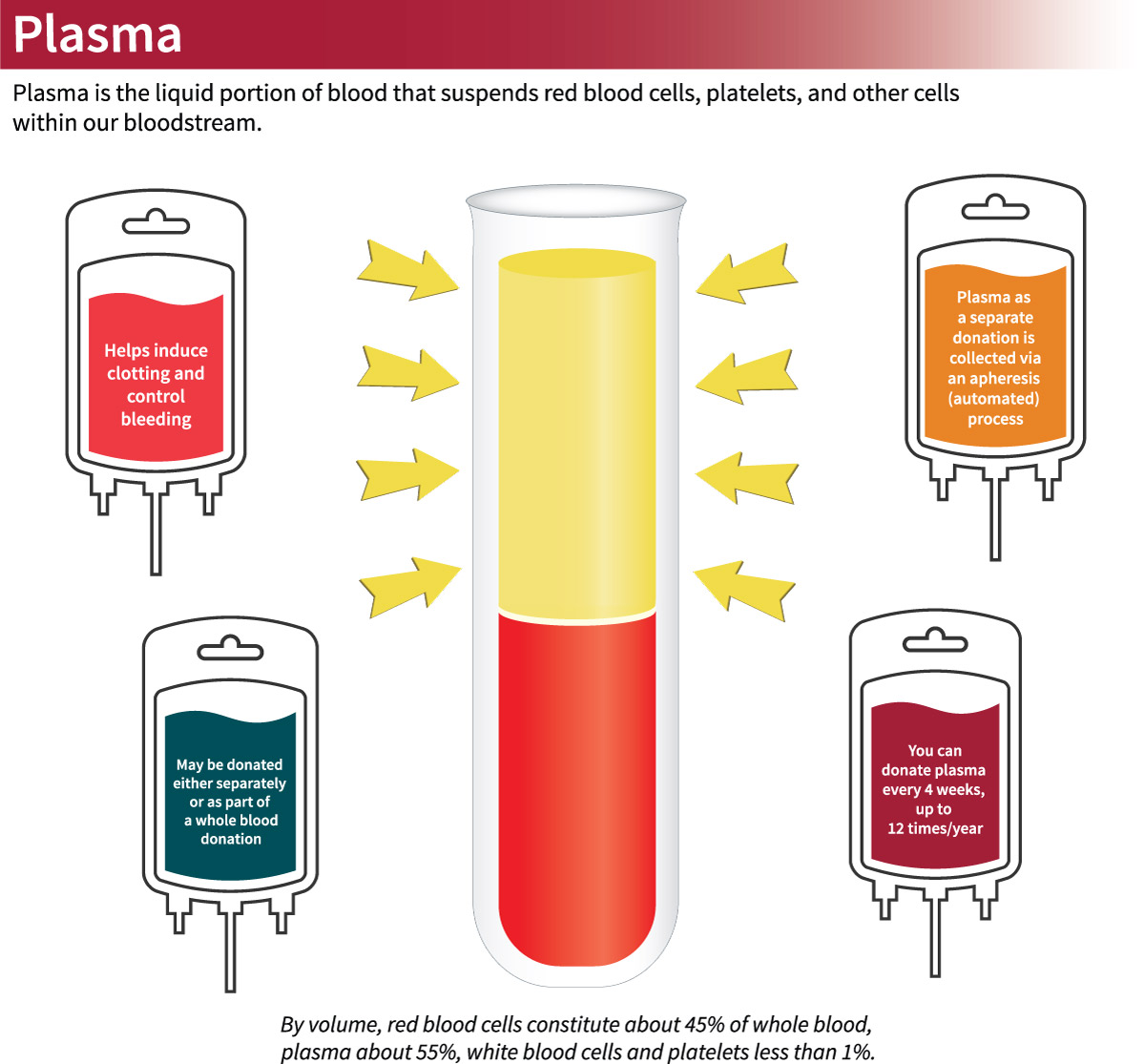What is Plasma Donation and Why is it Valuable?
Plasma donation is the process of giving the liquid part of your blood, known as plasma, to help create life-saving therapies for patients in need. Plasma is a valuable resource in the medical field, used to treat a range of conditions, including hemophilia, immunodeficiency disorders, and certain types of cancer. The plasma donation process involves separating the plasma from the other blood components, such as red and white blood cells, using a specialized machine.
There are two main types of plasma donations: source plasma and recovered plasma. Source plasma is collected from donors who have not been compensated for their donation, while recovered plasma is collected from donors who have been paid for their plasma. The majority of plasma donations are source plasma, which is used to create therapies for patients with rare and serious diseases.
The demand for plasma is high, and the medical industry relies heavily on donors to provide this valuable resource. By donating plasma, individuals can help make a difference in the lives of patients who rely on these therapies to survive. Additionally, plasma donation is a safe and relatively painless process, with most donations taking around 1-2 hours to complete.
For those considering plasma donation, it’s essential to understand the process and the benefits involved. Donors can earn money for their plasma, with payment rates varying depending on the location, weight, and frequency of donation. On average, donors can earn between $20 to $50 per donation, with some centers offering more for frequent donors. While the payment is a bonus, the real reward lies in knowing that your plasma is helping to save lives.
As the demand for plasma continues to grow, the importance of plasma donation cannot be overstated. By donating plasma, individuals can contribute to the development of life-saving therapies and make a real difference in the lives of patients in need. Whether you’re motivated by the payment or the desire to help others, plasma donation is a rewarding and valuable experience that can have a lasting impact.
How Much Can You Earn Selling Plasma: Factors Affecting Payment
The amount of money you can earn selling plasma varies depending on several factors, including your location, weight, frequency of donation, and the specific plasma collection center you visit. Generally, plasma donors can earn between $20 to $50 per donation, with some centers offering more for frequent donors.
Location plays a significant role in determining payment rates for plasma donation. Donors in urban areas tend to earn more than those in rural areas, as the demand for plasma is higher in cities. Additionally, some states have laws that regulate the payment of plasma donors, which can impact the amount of money you can earn.
Weight is another factor that affects payment rates for plasma donation. Donors who weigh more tend to earn more, as they can donate more plasma. Typically, donors must weigh at least 110 pounds to be eligible to donate plasma.
The frequency of donation also impacts payment rates. Donors who donate regularly, typically every 2-3 days, can earn more than those who donate less frequently. Some plasma collection centers offer loyalty programs or bonuses for frequent donors, which can increase earnings.
The specific plasma collection center you visit can also affect payment rates. Some centers offer higher payment rates than others, so it’s essential to research and compare rates before choosing a center. Additionally, some centers may offer promotions or bonuses for new donors or referrals, which can increase earnings.
For example, BioLife Plasma Services offers a payment rate of $20 to $40 per donation, depending on the location and frequency of donation. Grifols, another major plasma collection center, offers a payment rate of $25 to $50 per donation. CSL Plasma, a leading plasma collection center, offers a payment rate of $20 to $40 per donation.
It’s essential to note that payment rates can vary depending on the specific center and location. Donors should research and compare rates before choosing a center to ensure they are earning the most money possible for their plasma.
The Plasma Donation Process: What to Expect
The plasma donation process is a safe and relatively painless procedure that involves several steps. Before donating, you will undergo an initial screening to ensure you are eligible to donate. This screening includes a medical questionnaire, a review of your medical history, and a physical examination.
Once you have been cleared to donate, you will be seated in a comfortable chair and a sterile needle will be inserted into a vein in your arm. The plasma will be collected using a specialized machine that separates the plasma from the other blood components. The entire process typically takes around 1-2 hours to complete.
During the donation process, you will be monitored by trained medical staff to ensure your safety and comfort. You will also be provided with a comfortable and relaxing environment, including amenities such as free Wi-Fi, TV, and snacks.
After the donation process is complete, you will be given a post-donation care package that includes instructions on how to care for your arm and any potential side effects. You will also be provided with a payment for your plasma, which can vary depending on the location and frequency of donation.
It’s essential to note that plasma donation is a safe process, and the risk of complications is extremely low. However, as with any medical procedure, there are some potential risks and side effects to be aware of. These include dehydration, fatigue, and citrate reaction, which can be treated with medication and rest.
To minimize the risk of complications, it’s crucial to follow the post-donation care instructions provided by the plasma collection center. This includes drinking plenty of water, eating a healthy meal, and avoiding strenuous activities for several hours after donation.
Overall, the plasma donation process is a safe and rewarding experience that can help make a difference in the lives of patients in need. By understanding what to expect during the donation process, you can feel more comfortable and confident in your decision to donate.
Top Plasma Collection Centers: Payment Rates and Reviews
There are several top plasma collection centers that offer competitive payment rates and excellent services to donors. Here are some of the top centers, their payment rates, and reviews:
BioLife Plasma Services is one of the largest plasma collection centers in the US, with over 100 locations across the country. They offer a payment rate of $20 to $40 per donation, depending on the location and frequency of donation. BioLife has a 4.5-star rating on Google Reviews, with donors praising their friendly staff and efficient donation process.
Grifols is another major plasma collection center with over 200 locations worldwide. They offer a payment rate of $25 to $50 per donation, depending on the location and frequency of donation. Grifols has a 4.5-star rating on Google Reviews, with donors praising their modern facilities and professional staff.
CSL Plasma is a leading plasma collection center with over 300 locations worldwide. They offer a payment rate of $20 to $40 per donation, depending on the location and frequency of donation. CSL Plasma has a 4.5-star rating on Google Reviews, with donors praising their friendly staff and convenient locations.
Octapharma Plasma is a plasma collection center with over 100 locations in the US and Europe. They offer a payment rate of $20 to $40 per donation, depending on the location and frequency of donation. Octapharma Plasma has a 4.5-star rating on Google Reviews, with donors praising their modern facilities and professional staff.
When choosing a plasma collection center, it’s essential to consider factors such as payment rates, location, and reviews. By doing your research and selecting a reputable center, you can ensure a safe and rewarding plasma donation experience.
In addition to payment rates and reviews, it’s also important to consider the unique features and promotions offered by each center. For example, some centers may offer referral bonuses, loyalty programs, or special promotions for frequent donors. By taking advantage of these offers, you can maximize your earnings and make the most of your plasma donation experience.
Maximizing Your Earnings: Tips for Frequent Plasma Donors
For individuals who donate plasma regularly, maximizing earnings is a top priority. While the payment rates for selling plasma vary depending on the location, weight, and frequency of donation, there are several strategies that can help frequent donors increase their earnings. In this section, we will explore some valuable tips to help you get the most out of your plasma donations.
One of the most effective ways to maximize your earnings is to donate regularly. Most plasma collection centers have a maximum donation frequency, usually twice within a 7-day period, with at least 2 days in between donations. Donating regularly not only increases your overall earnings but also helps to ensure a consistent supply of plasma for life-saving therapies.
Another way to boost your earnings is to refer friends and family members to donate plasma. Many plasma collection centers offer referral programs that reward donors for bringing in new donors. These programs can be a great way to earn extra money, with some centers offering up to $50 or more for each successful referral.
Taking advantage of promotions and special offers is another way to increase your earnings. Many plasma collection centers offer special promotions, such as bonus payments for donating during peak hours or for reaching certain donation milestones. These promotions can be a great way to earn extra money, so it’s essential to stay informed about any offers that may be available.
In addition to these strategies, it’s also essential to choose a plasma collection center that offers competitive payment rates. Some centers may offer higher payment rates than others, so it’s crucial to research and compare rates before selecting a center. You can use online resources, such as reviews and forums, to find out which centers offer the best payment rates and overall experience.
Finally, it’s essential to maintain a healthy lifestyle to ensure that you can continue to donate plasma regularly. This includes eating a healthy diet, staying hydrated, and getting regular exercise. By taking care of your overall health, you can help to ensure that you can continue to donate plasma and maximize your earnings.
By following these tips, frequent plasma donors can maximize their earnings and make the most out of their donations. Whether you’re donating plasma to help support yourself financially or to contribute to the development of life-saving therapies, these strategies can help you achieve your goals. So, if you’re looking to increase your earnings from selling plasma, be sure to donate regularly, refer friends, take advantage of promotions, choose a competitive center, and maintain a healthy lifestyle.
Plasma Donation Safety: Risks and Precautions
While plasma donation is a safe and well-established process, there are potential risks and precautions that donors should be aware of. Understanding these risks and taking steps to minimize them can help ensure a safe and successful donation experience.
One of the most common risks associated with plasma donation is dehydration. Donors may experience dehydration due to the removal of plasma, which can lead to symptoms such as dizziness, lightheadedness, and fatigue. To minimize this risk, donors are encouraged to drink plenty of water before, during, and after the donation process.
Fatigue is another common side effect of plasma donation. Donors may feel tired or weak after donating, which can be due to the removal of plasma and the temporary decrease in blood volume. This fatigue is usually mild and temporary, but donors should avoid strenuous activities and get plenty of rest after donating.
Citrate reaction is a rare but potential risk associated with plasma donation. Citrate is an anticoagulant used to prevent blood clotting during the donation process, and some donors may experience a reaction to it. Symptoms of citrate reaction can include numbness or tingling in the fingers and toes, muscle weakness, and shortness of breath. If you experience any of these symptoms during or after donation, inform the medical staff immediately.
In addition to these risks, donors should also be aware of the potential for bruising and swelling at the needle site. This is usually mild and temporary, but donors can minimize the risk by keeping the arm straight and still during the donation process.
To ensure a safe and successful donation experience, donors should follow the post-donation care instructions provided by the plasma collection center. These instructions may include drinking plenty of water, avoiding strenuous activities, and getting plenty of rest. Donors should also report any adverse reactions or symptoms to the medical staff immediately.
Plasma collection centers also take numerous safety precautions to minimize the risks associated with plasma donation. These precautions include:
- Thorough medical screening and evaluation before donation
- Use of sterile equipment and supplies
- Monitoring of vital signs during and after donation
- Provision of post-donation care and instructions
By understanding the potential risks and precautions associated with plasma donation, donors can take steps to minimize them and ensure a safe and successful donation experience. If you have any concerns or questions about plasma donation safety, consult with the medical staff at your local plasma collection center.
How to Find a Plasma Donation Center Near You
With numerous plasma donation centers located throughout the country, finding one near you is easier than ever. In this section, we will provide guidance on how to find a plasma donation center near you, including online search tools, maps, and reviews.
One of the most convenient ways to find a plasma donation center near you is to use online search tools. Simply type in “plasma donation centers near me” or “plasma donation centers in [your city/state]” and browse through the results. You can also use online directories like Google Maps or Yelp to find plasma donation centers in your area.
Another way to find a plasma donation
Conclusion: Unlocking the Value of Your Plasma
In conclusion, plasma donation is a valuable resource that can help save lives and provide financial compensation to donors. By understanding the process of plasma donation, the factors that affect payment, and the safety measures in place, individuals can make informed decisions about donating plasma.
As we’ve discussed throughout this article, plasma donation is a safe and well-established process that involves the collection of plasma from donors. The plasma is then used to create life-saving therapies for patients with rare and serious diseases. Donors can earn money by selling their plasma, with payment rates varying depending on location, weight, frequency of donation, and the specific plasma collection center.
By following the tips and strategies outlined in this article, frequent plasma donors can maximize their earnings and make the most out of their donations. Additionally, by choosing a reputable and safe plasma donation center, donors can ensure a safe and comfortable donation experience.
If you’re considering donating plasma, we encourage you to take the first step and find a plasma donation center near you. With the guidance provided in this article, you can make an informed decision about plasma donation and start unlocking the value of your plasma today.
Remember, plasma donation is a valuable resource that can help save lives and provide financial compensation to donors. By donating plasma, you can make a difference in the lives of patients with rare and serious diseases. So why not consider donating plasma today and start unlocking the value of your plasma?
By donating plasma, you can earn money, help save lives, and contribute to the development of life-saving therapies. With the information provided in this article, you can make an informed decision about plasma donation and start unlocking the value of your plasma today.






